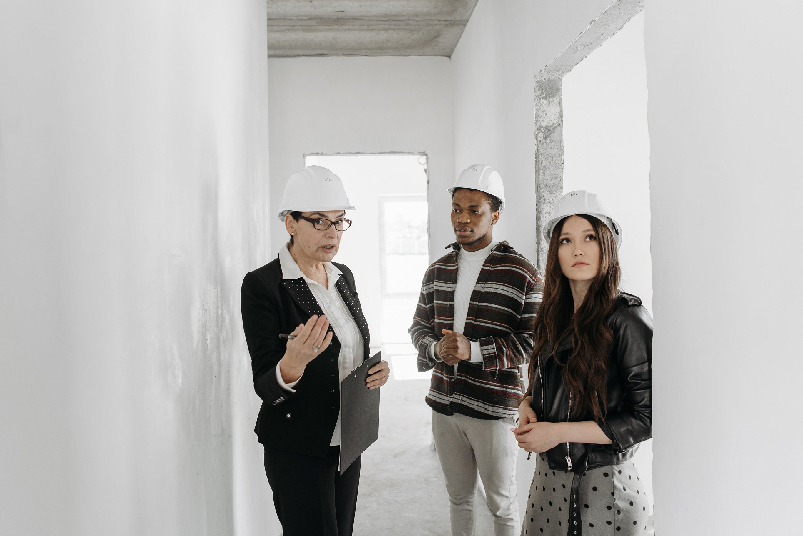Property Condition Report (PCR)
Property Condition Report – services offered by David Dornbos Real Estate Asset Advisor
 A Property Condition Report (PCR) for commercial real estate typically provides a comprehensive assessment of the physical condition of a property.
A Property Condition Report (PCR) for commercial real estate typically provides a comprehensive assessment of the physical condition of a property.
It can include details about the structural, mechanical, electrical, and plumbing systems, as well as the overall building envelope. The report often highlights any existing or potential issues, such as maintenance needs, issue concerning code compliance, and safety concerns.
It can also address current and prior use environmental factors, including hazardous materials, contamination risks and energy efficiency.
Additionally, a Property Condition Report (PCR) may discuss the overall condition of the site, parking areas, landscaping, and other exterior features.
The purpose of the report is to assist potential buyers, sellers, lenders, insurers and other stakeholders in making informed decisions about a property by providing a thorough third-party analysis of a property’s current condition.
The scope of a Property Condition Assessment can be scaled to meet various needs. It can range from simply a basic third party physical walk-through review of a commercial property to a detailed engineering report that encompasses a wide range of issues and concerns.
A Property Condition Report (PCR) can help to establish a property’s current environmental standing within the new green cultural agenda. The costs required to meet compliance with new green agenda laws, rules, policy and legislation can be substantial and should be clearly disclosed and considered prior to any commercial real property purchase.
A PCR can also serve as a key resource to help existing real property owners and property managers plan and budget and insure their compliance within an expanding legislative environment.
The new green cultural agenda has placed new emphasis, not only on the environmental footprint of a property’s past use but now are actively involved in setting new standards that dictate environmental limitations on how commercial property’s will be allowed to use their property moving forward.
The growing green cultural movement is supported by an ever-increasing body of government laws, policies and regulations that have set new limits on private ownership and also set new environmental performance standards on commercial real property. The intended of these new laws, policies and regulations is to focus on perceived environmental concerns related to energy usage, carbon emissions and other concerns.
Commercial real property buyers, current owners and property managers need to benchmark where their commercial property stands, within the current regulatory environment. Commercial real property owners should be carefully planning capital expenditures to address the growing legislative demands being imposed on property owners through the growing green cultural agenda movement.
A Property Condition Report (PCR) can be designed consider the intersection between a commercial building’s current physical condition and those steps that will be needed to implement new evolving green movement standards.
A PCR can also highlight the opportunities and challenges that real property ownership will face as they attempt to reconcile and balance their financial and operating concerns against the impact of new green cultural agenda requirements.
Commercial Real Estate Buildings
Commercial real estate buildings represent a significant portion of global energy consumption and greenhouse gas emissions. Traditional building designs and operations often prioritize cost-efficiency over environmental sustainability, leading to inefficiencies in energy usage, poor indoor air quality, and an increased carbon footprint.
Moreover, aging infrastructure and inadequate maintenance exacerbate these issues, resulting in deteriorating building conditions and higher operational costs.
The growing green cultural agenda is dually aimed at reducing carbon emissions and promoting sustainable development and to provide social cultural leadership through policies that include and support Diversity, Equity, and Inclusion (DEI).
Key initiatives include the Paris Agreement, which sets targets for limiting global warming, and the United Nations Sustainable Development Goals, which advocate for environmental stewardship alongside social and economic progress. These initiatives underscore the urgency of transitioning towards greener practices across all sectors, including commercial real estate.
The new green agenda presents both challenges and opportunities for commercial building owners, developers, and occupants.
On one hand, retrofitting existing buildings to meet sustainability standards can be costly and logistically complex. However, investing in energy-efficient technologies, such as smart HVAC systems, LED lighting, and renewable energy sources, can yield long-term savings and enhance market competitiveness.
Additionally, adopting green building certifications, such as LEED (Leadership in Energy and Environmental Design) or BREEAM (Building Research Establishment Environmental Assessment Method), can enhance the environmental performance and marketability of commercial properties.
Furthermore, green building practices extend beyond energy efficiency to encompass aspects such as water conservation, waste management, and occupant health and well-being. Implementing strategies such as rainwater harvesting, recycling programs, and biophilic design can improve both the environmental sustainability and livability of commercial spaces, thereby enhancing tenant satisfaction and productivity.
Green building practices present challenges that may hinder widespread adoption. These include upfront costs, regulatory barriers, and a lack of awareness of laws, policies, regulations, legislation and misconceptions surrounding the excessive costs associated with non-compliance. Overcoming these challenges requires collaboration between policymakers, industry leaders, and the public to incentivize sustainable investments, streamline regulatory processes, and raise awareness about the costs, impacts and benefits of green buildings.
Moreover, advances in technology and data analytics offer new opportunities for optimizing building performance and reducing environmental impact. The integration of Internet of Things (IoT) devices, artificial intelligence, and building management systems enables real-time monitoring and control of energy usage, predictive maintenance, and optimization of indoor environmental quality.
By harnessing these technologies, commercial building owners can achieve greater efficiency, resilience, and sustainability in their operations.
A Property Condition Assessment can significantly help owners transition towards greener commercial building practices and help prepare owners to plan and budget to help mitigating operational inefficiencies and delays.
Green agenda policies designed to address climate change, enhancing energy security, and promoting sustainable development will impact your commercial real estate asset and business operation.
By investing in energy-efficient technologies, adopting green building certifications, and embracing innovative solutions, commercial building owners can not only reduce their environmental footprint but also improve tenant satisfaction, financial performance, and long-term value.
As we navigate the challenges of the 21st century, the new green cultural agenda is no longer a matter of choice that can be made by commercial property owners it is a mandate that ownership will be required to address as a condition to allow them to move forward!
A Property Condition Report (PCS) can provide ownership with an understanding of where your investment property stands today, what issues need to addressed as you move forward and can help you budget and owners transition to the green cultural agenda more effectively.
The growing green cultural agenda has made a Property Condition Report (PCS) a key component of a buyer’s pre-purchase due diligence review and should be considered along with an appraisal, survey, environmental study or any other specialized reviews that add value in support of a purchase, or as an on-going part of an owners operating or property management plan.


